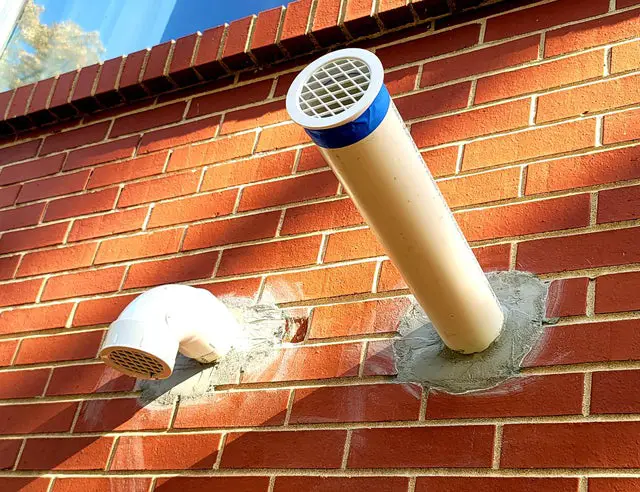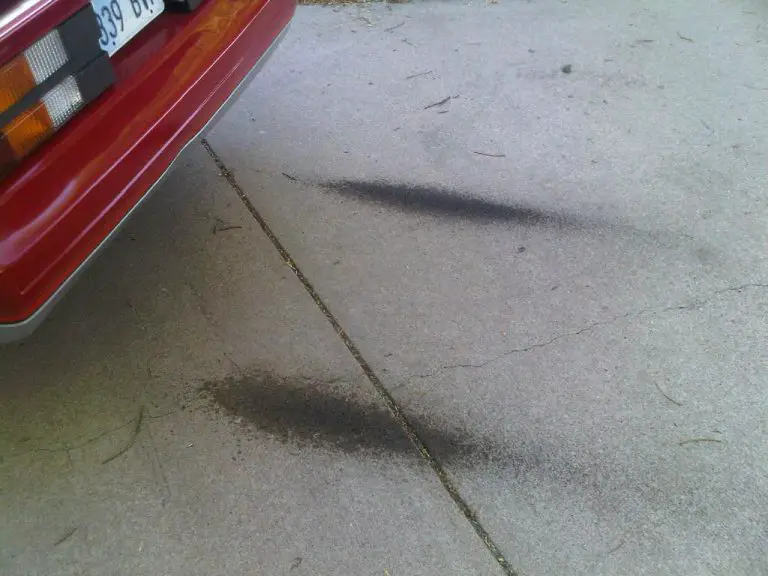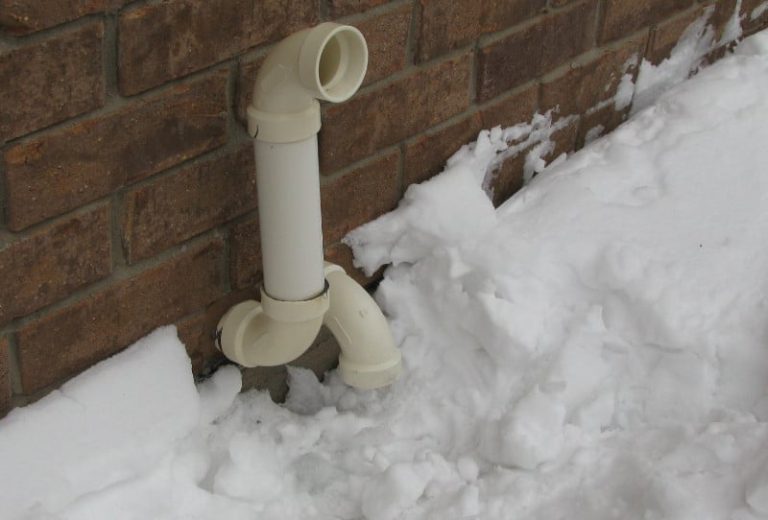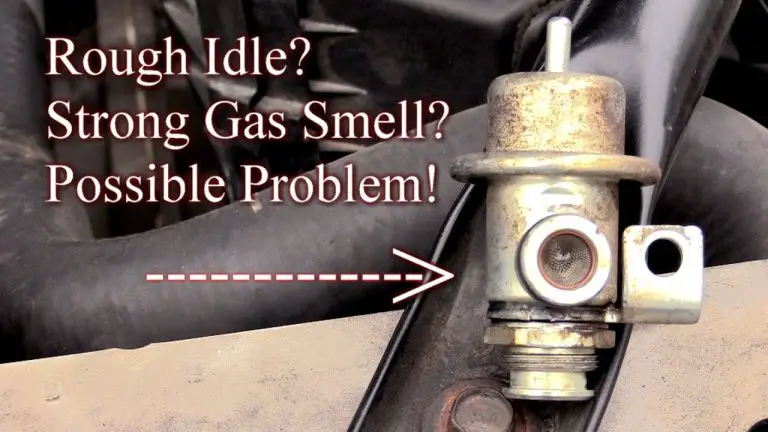Dealing With Exhaust Smoke: Types, Causes, And Solutions
Exhaust smoke from a vehicle can indicate underlying issues. Learn about types, causes, and solutions to tackle this problem effectively.
Road vehicles emit exhaust smoke, which can range in color, including white, black, blue, or gray. Each color signifies different causes, such as coolant leakage, incomplete combustion, burning oil, or worn engine parts. By understanding the type of smoke and its root cause, you can take appropriate action, whether it’s checking coolant levels, replacing faulty parts, or seeking professional help.
Addressing the issue promptly not only improves your vehicle’s performance but also reduces environmental pollution. So, it’s crucial to be aware of the types, causes, and solutions to effectively deal with exhaust smoke.

Credit: www.amazon.com
White Smoke: Causes And Solutions
White smoke from the exhaust can be a cause for concern and indicate underlying issues. The possible causes of white smoke may include a coolant leak into the combustion chamber, a faulty head gasket, or a cracked cylinder head. Additionally, it can be a result of condensation build-up in the exhaust system during colder weather.
To reduce or eliminate white smoke, it is essential to identify and rectify the root cause. This may involve repairing or replacing the head gasket, fixing any coolant leaks, or addressing issues with the cylinder head. Regular maintenance and servicing can also help prevent white smoke by ensuring the proper functioning of the engine.
Monitoring engine temperature and keeping it within the recommended range can further contribute to minimizing white smoke. By addressing the causes and implementing appropriate solutions, it is possible to mitigate the issue of white smoke from the exhaust.
Black Smoke: Causes And Solutions
Black smoke from the exhaust can be concerning, but understanding its causes and finding effective solutions is crucial. One common cause is an excessively rich fuel-air mixture. This can happen due to a faulty oxygen sensor or a clogged fuel injector.
Another culprit is a clogged air filter, restricting proper airflow and leading to an incomplete combustion process. Engine oil leaks can also result in black smoke, as the oil enters the combustion chamber and burns alongside fuel. To address these issues, it’s important to regularly maintain and service your vehicle.
Regularly check and replace your air filter, ensure your sensors and injectors are functioning properly, and promptly address any oil leaks. Keeping up with these maintenance tasks can help you prevent black smoke and maintain a healthy exhaust system.
Blue Smoke: Causes And Solutions
Blue smoke emissions from exhaust can be a cause for concern. The main factors leading to blue smoke are burning oil within the engine and worn-out piston rings. These issues result in oil leaking into the combustion chamber, leading to an inefficient fuel burn.
To minimize blue smoke, regular engine maintenance is crucial. Checking and replacing worn-out piston rings, as well as fixing any oil leaks, will help prevent oil from entering the combustion chamber. Additionally, using high-quality engine oil specifically designed for older engines can also reduce blue smoke emissions.
If the issue persists, it is essential to consult a professional mechanic to diagnose and fix any underlying problems causing blue smoke. Taking proactive measures can help ensure a cleaner, more efficient engine performance.
Regular Vehicle Maintenance
Regular vehicle maintenance is crucial in preventing exhaust smoke. By following these essential maintenance tips, you can effectively suppress smoke emission. Firstly, make sure to change your engine oil and air filters regularly. Secondly, inspect and repair any damaged or leaking exhaust components promptly.
Thirdly, keep an eye on the coolant level and ensure it is sufficient to prevent overheating. Fourthly, have your fuel injectors cleaned to maintain proper fuel combustion. Additionally, check and replace worn-out spark plugs to improve ignition performance. Moreover, pay attention to the engine’s timing and keep it properly adjusted.
Lastly, schedule regular visits to a trusted mechanic for comprehensive inspections and tune-ups. By adhering to these maintenance practices, you can minimize the chances of exhaust smoke and enjoy a smoother running and environmentally friendly vehicle.
Choosing The Right Fuel And Oil
Choosing the right fuel and oil for your vehicle is crucial in minimizing exhaust smoke. The quality of fuel and oil directly impacts the emission levels and smoke color. To begin with, opt for high-quality fuel from reputable sources. Using a fuel with a higher octane rating can significantly reduce smoke emissions.
Additionally, consider using synthetic oil rather than conventional oil. Synthetic oil offers better lubrication and reduces the chances of oil burning, which can lead to excessive smoke. Regularly checking and replacing your air and fuel filters can also prevent smoke emissions.
Lastly, make sure to follow the manufacturer’s recommendations for fuel and oil grades. By selecting the appropriate fuel and oil for your vehicle, you can effectively tackle and minimize exhaust smoke issues.
Understanding The Role Of The Exhaust System
The exhaust system plays a crucial role in a vehicle’s overall performance and environmental impact. Its primary function is to expel the harmful gases produced by the engine, ensuring the vehicle runs efficiently. Without a well-functioning exhaust system, smoke emissions can increase, leading to various issues.
Understanding the functions of the exhaust system is essential for comprehending how it impacts smoke emissions. Regular maintenance of the exhaust system is necessary to prevent any malfunctions and keep smoke emissions at a minimum. This includes checking for leaks, inspecting the catalytic converter, and ensuring all components are properly connected.
When repairs are needed, it is important to address them promptly to avoid further damage to the exhaust system. By following these steps, you can effectively deal with exhaust smoke and maintain a healthy and efficient vehicle.
Frequently Asked Questions On Dealing With Exhaust Smoke: Types, Causes, And Solutions
Can Exhaust Smoke Be Harmful To Your Health?
Yes, exhaust smoke can be harmful as it contains toxic pollutants such as carbon monoxide and particulate matter. Prolonged exposure can lead to various respiratory problems and even serious health conditions.
What Are The Common Causes Of White Exhaust Smoke?
White exhaust smoke is often caused by coolant leaking into the combustion chamber. This can be due to a blown head gasket, cracked cylinder head, or a faulty intake manifold gasket.
Why Is Black Smoke Coming Out Of My Car’S Exhaust?
Black smoke usually indicates an issue with the fuel system, such as excessive fuel being injected into the cylinders. Common causes include a clogged air filter, malfunctioning injectors, or a problem with the fuel pressure regulator.
How Can I Reduce Blue Smoke Coming Out Of My Exhaust?
Blue smoke is typically a sign that your engine is burning oil. To reduce it, you may need to replace worn piston rings or valve seals, perform regular oil changes, and ensure you’re using the correct viscosity oil for your engine.
What Should I Do If My Car Emits A Strong Odor From The Exhaust?
If you notice a strong odor from your exhaust, it could indicate a problem with the catalytic converter or fuel system. It’s important to have a mechanic inspect your vehicle to diagnose the issue and prevent any potential damage.
Conclusion
To ensure your vehicle’s optimal performance and maintain a clean environment, dealing with exhaust smoke is crucial. By understanding the various types such as white, black, and blue smoke, you can identify the underlying causes and take appropriate action. White smoke, for instance, could indicate a coolant or oil leak, while black smoke may point to a fuel-related issue or engine damage.
Blue smoke, on the other hand, might be a sign of burning oil or worn piston rings. The causes can range from simple issues like a loose gas cap to more complex problems like a faulty turbocharger or damaged gaskets.
It’s essential to address these concerns promptly to avoid potential engine failure or further damage. From regular maintenance and inspections to seeking professional help, there are several solutions available to tackle exhaust smoke. Remember, early detection and timely action are key in ensuring a safe and efficient driving experience.




